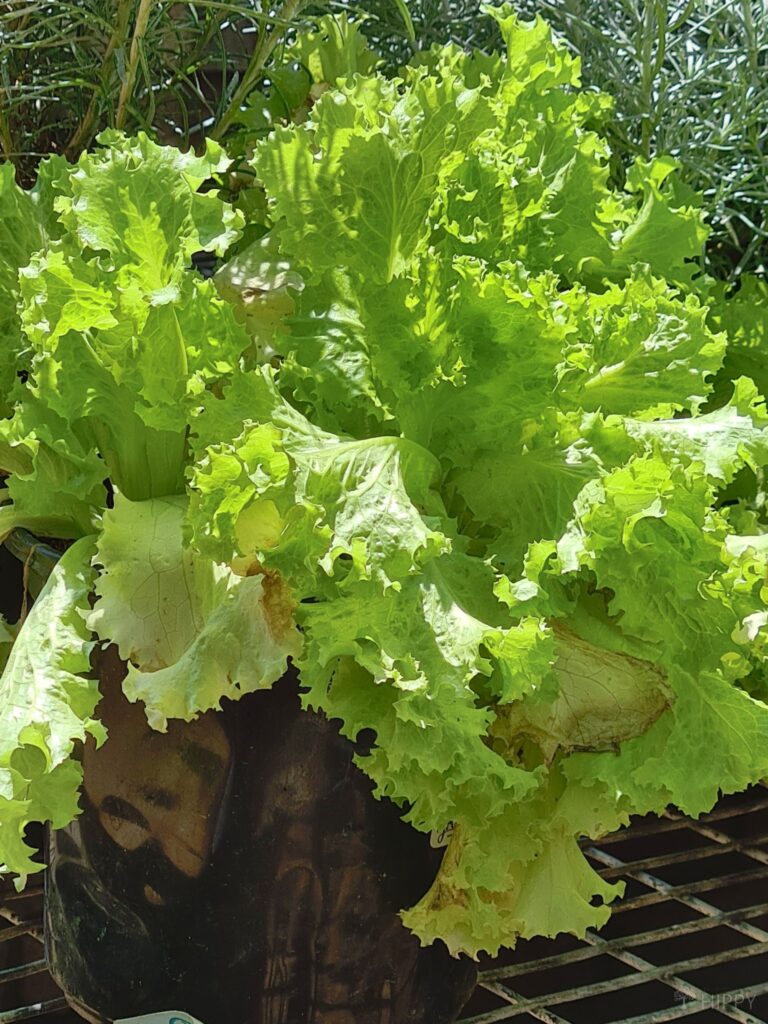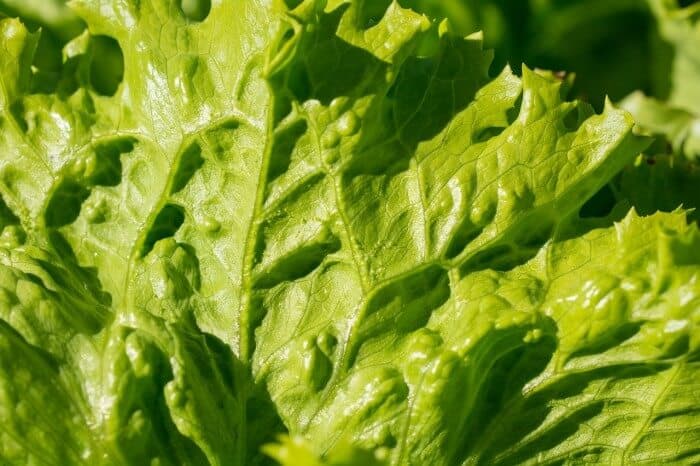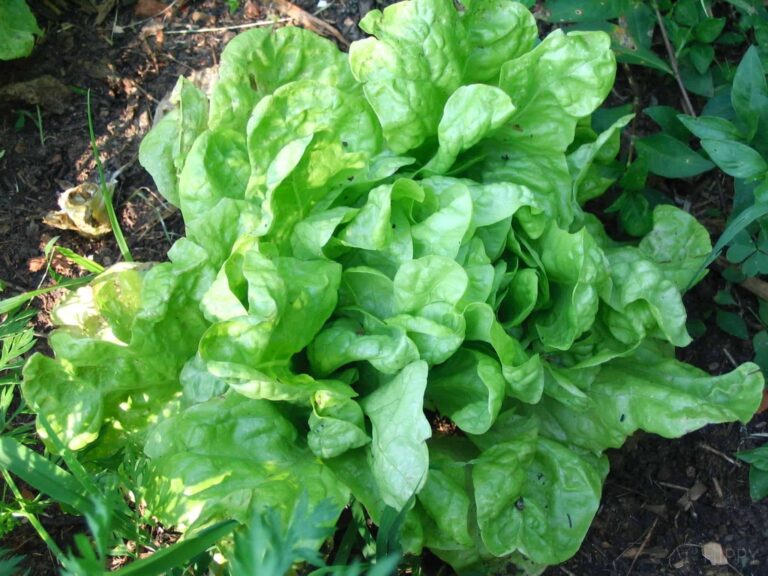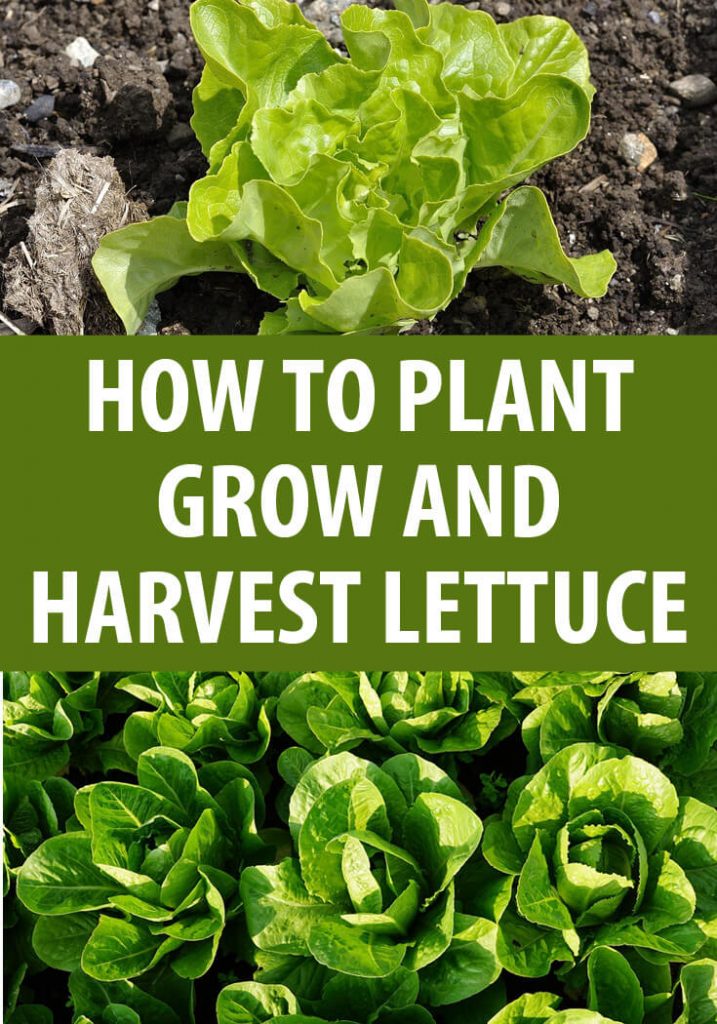A feeling of dread came over me as I reached into the bag of lettuce to grab a handful of fresh, nutritious greens for my salad.
Just imagine my surprise when overnight, my store-bought bag of tasty fresh salad greens had turned to mush even in the coolness of my refrigerator.

Instead of crunchy delicious greens, much to my dismay, I grabbed a handful of disgusting lettuce slime.
Bagged lettuce just does not last long, even when refrigerated. But for very little investment, you can grow your own lettuce and have fresh lettuce greens to eat every day without buying lettuce from the grocery store.
Even for the novice gardener, planting your own lettuce is fast, easy, and just makes sense. Homegrown lettuce is more savory than store-bought lettuce. It is crunchier, fresher, and has more vitamins than the produce you find in the grocery store.
Grocery store varieties of lettuce have been cultivated for shipping, aesthetics, and disease resistance, but loses nutrients the longer it sits on the shelf.
Homegrown lettuce retains more nutrients because it is fresher and cultivated for different characteristics. Lettuce is easy and cheap to grow, comes in a wide array of varieties, and it does not take up much space in your garden or on your balcony or patio.

When to Plant Lettuce
Lettuce is a cool weather crop, which means it grows best in the spring and fall in most areas. If you plan to direct sow your lettuce seeds in your garden, plant them no more than two weeks before your last frost date.
Lettuces can tolerate a light frost or snow, but not extreme cold. If you want to start your lettuce plants even earlier, you can start them indoors in seed trays four to six weeks before your last frost date. Make sure you harden off your seedlings for a week before transplanting them into your garden.
To harden off lettuce seedlings, set them outside every day out of direct sun and harsh weather. Start with keeping the plants outside for one hour, then increase it to two hours. Continue increasing the amount of time plants are sitting outside until you are ready to transplant them, about a week later.
Plant your lettuce seedlings in the garden after hardening them off and no more than one week before your last frost date. Lettuce seeds will germinate best at around 70 degrees, but the lettuce plants will grow best when the temperature is around 65 degrees.
Lettuces planted in the middle of summer when the weather is hottest will tend to bolt or go to seed too quickly. Hot weather can cause most varieties of lettuce to take on a bitter flavor, which is why summer planting is not as popular as fall and spring lettuce planting.
Some varieties of lettuce have been bred specifically to withstand the hot summer temperatures and avoid bolting.
Where to Plant Lettuce
Lettuce is often planted directly into the garden from seed, which is known as direct sowing. Lettuces can be planted in tight rows to prevent weeds, or broadcast into larger sections.
Broadcasting is a method of scattering seeds over a larger area, rather than specifically planting each seed, one at a time. Whether you plant in rows or broadcast your seeds, cover the tiny seeds with one quarter to one half inch of soil. Water carefully so as not to wash away the delicate seeds.
Lettuce can also be started in trays or pots indoors, hardened off, and then transplanted into the garden. However, lettuce should be transplanted outdoors no more than one week before the last frost date to protect the tender seedlings from extreme weather.
Lettuce can grow in full sun or even in part shade. Lettuce that is grown in full sun will grow more quickly, but lettuce that is grown in part shade may taste less sweeter.
A fenced in garden or raised bed are great choices to plant lettuce. This will keep your lettuce crop protected from small animals like rabbits that will enjoy your tasty greens. Plant about ten lettuce seeds per foot of garden row. Space your rows approximately twelve to eighteen inches apart.
Although you can easily grow lettuce in your garden, this vegetable does not need a large space to grow. You can easily grow your lettuces in small raised beds, along side your flowers in the flower bed, or even in containers on your patio or balcony. Some varieties of lettuce will grow indoors, year round.
Growing Lettuce Indoors
Because lettuce grows well in part shade, you can grow it indoors over the winter in a sunny window. Try planting loose leaf lettuce in rich potting soil in a flower pot and place in a window that gets plenty of sun.
Water as needed. Try growing the same lettuce under grow lights if your windows do not get enough sun.
You can regrow romaine lettuce from its base. Choose your harvested romaine head, and cut the leaves off about two inches up from its base.
Place the base of the romaine into a shallow bowl or jar of water. After it begins to grow, transplant the lettuce into a pot and make sure it gets plenty of light. Water your lettuce twice a week, but be careful not to let the soil become too soggy.
Soil for the Best Lettuce
Lettuce grows easily and is normally forgiving if the soil quality is not perfect. However, lettuce grows best in loose soil that stays moist but is not soggy. Ideally, your soil will contain plenty of organic matter to keep it loose and fertilized. Aim for a soil pH that is between 6.0 and 6.5.
Hydroponic Lettuce
One of the easiest vegetables to grow hydroponically is lettuce. Seeds are started in a specialized soil-less growing medium until the seeds begin to grow. The seedlings are then transferred to a water and nutrient solution.
A sunny window or some full spectrum fluorescent lights will enable the lettuce to mature quickly. Hydroponic lettuce is a great alternative when outdoor growing space is not available. You can order pre-fabricated hydroponic kits or create your own hydroponic set-up.
Types of Lettuce
There are four popular types of lettuce that you may want to plant in your garden. These four types are made up of many different varieties. Choose the ones that fit your nutritional needs, taste, and gardening capabilities:
- Butterhead, a sweet, delicate head lettuce.
- Crisphead, a crunchier version of a head lettuce.
- Loose leaf, individual leaves that are sweet and easy to grow.
- Romaines, a sweet and crunchy variety of lettuce.
Butterhead Lettuce
Butterhead lettuces are a type of lettuce with large loose heads and soft delicate leaves. This variety of lettuce boasts a sweet buttery flavor and is great in salads or used in place of tortilla wraps or bread for sandwiches. Most butterhead lettuce varieties will mature in about forty five to fifty five days.
Buttercrunch Lettuce
Butter crunch lettuce is heat tolerant and matures in about sixty five days. It grows crisp and juicy leaves in a loose head that do not turn bitter in the heat as easily as other varieties.
All Year Round Lttuce
This variety of butterhead lettuce readily withstands the heat of summer and the cool of spring and fall. It can be direct sown from March until August, offering a harvest from April through October.
It will overwinter well if protected, and can be planted early in the greenhouse, making it a great choice for the year round gardener. It is rich in vitamins and tastes great.
Boston Lettuce
Boston Lettuce has large, light colored leaves and is easily confused with Bibb lettuce.
Bibb
Bibb lettuce is often used interchangeably with Boston lettuce, but it typically this variety of lettuce grows in slightly smaller, darker colored heads than Boston lettuce.
Merveille des Quatre Saisons Lettuce
Merveille des Quatre Saisons grows well year-round in mild climates.

Crisphead Lettuce
Crisphead lettuce varieties, also known as iceberg, grow round, overlapping leaves that appear in a tight head. This crispy lettuce has a mild flavor and works well in sandwiches, salads, and as a garnish.
Like its name, crisphead lettuce offers a nice crunch. Iceberg lettuce is the most sensitive to heat and can be difficult to grow. It typically matures in seventy five to eighty days.
Loose Leaf Lettuce
Loose leaf lettuces are some of the easiest lettuce varieties to grow. Their flavor tends to be mild and sweet. It grows in single, loose leaves that do not form a round head.
They are also known as leaf, cutting, or bunching lettuce. These lettuces grow in a variety of colors and shapes and mature in forty to forty five days.
Crispino
Crispino is a dependable variety of iceberg lettuce. It tolerates more heat and humidity than standard crispheads. You can expect a higher percentage of uniform heads with this variety of iceberg lettuce.
Summertime
Summertime is a bolt resistant variety of iceberg lettuce. It grows in tight heads with thin, crinkled leaves and a darker green coloring.
Ithaca
Ithaca is a variety of iceberg lettuce that matures in approximately sixty five days.
Great Lakes Lettuce
Great Lakes lettuce grows large heads with thick, crumpled leaves. It was the first variety of iceberg lettuce to be cultivated.
Black Seeded Simpson
Black Seeded Simpson is a sweet-tasting and fast growing loose leaf lettuce. This variety of lettuce does not transplant well, but can be direct sown in your garden or container.
It is one of the most popular varieties of lettuce for gardeners in the United States. It may turn bitter or rot in hot weather. Snipping just the leaves of Black Seeded Simpson means the plant will be able to regrow from its base.
Simpson Elite
Simpson Elite is very similar to Black Seeded Simpson, however, it extends the season slightly because it is less likely to become bitter in the heat. This lettuce tastes best when picked immediately before eating.
Merlot Lettuce
Merlot lettuce is also known as Galactic lettuce. It is one of the darkest red loose leaf lettuce varieties available. Merlot is rich in antioxidants and is a great “cut and come again variety,” which is a type of lettuce that can be continually cultivated as the plant regrows after it is harvested.
This lettuce matures in fifty five days.
Salad Bowl Lettuce
Salad bowl lettuce has a sweet flavor with curled, crisp, tender leaves. This variety of lettuce does not become bitter in hot weather, but does grow best in the cooler months.
Romaines
Romaine lettuces grow in a tall, compact head with firm leaves and ribs down the side. Romaines, or cos, as it is often called, are more tolerant of heat than other varieties of lettuce.
The inner leaves of a romaine head are lighter in color and more tender, while the outer leaves tend to be a deeper green and have a tougher texture. The great tasting Romain lettuce is frequently used in salads. Romain lettuce develops in approximately seventy days.
Brown Goldring Lettuce
Brown Goldring is a delicious romaine lettuce known for its brown outer leaves and golden, inner heart.
Cimmaron
Cimmaron has been around since the 1700’s. It bears large reddish-bronze heads that do not bolt.
Winter Density Lettuce
Winter Density is an early growing romaine lettuce. It is ready in as early as fifty four days and grows in a tightly compacted head.
Dragoon Lettuce
Dragoon is a miniature variety of romaine lettuce. Dragoon matures in forty three days and is suitable for hydroponic systems.
Other lettuce varieties:
- Speckles Lettuce
- Blushed Butterhead
- Sparx
- Flashy Trout Back
- Victoria
- Jericho
- Coastal Star
- Breen
- Monte Carlo
- Tom Thumb
- Flashy Butter Oak
- Oakleaf
- Perilla Green
- Perilla Red
- Ruby
- Green Ice
- Fine Frilled
- Salinas
- Sun Devil
- Mission
- Legacy
- Three Heart Lettuce
- Loose leaf

When to Harvest Lettuce
It takes anywhere from forty five to fifty five days for lettuce to mature, especially lettuce that grows as a loose leaf variety. Loose leaf lettuces can be harvested at any point in their growing cycle.
However, lettuce varieties that grow heads, such as romaine, will take longer to grow. Romain may take from seventy five to eighty five days to mature, and crisper lettuces may take anywhere from seventy to one hundred days to maturity.
Light frost can make lettuce taste sweeter, but heavy frost or extreme cold can be damaging, if not fatal to plants.
Be sure to harvest lettuce before excessive heat or cold sets in and before plants begin to bolt. Lettuce tastes best when harvested early in the morning when the temperature is cooler.
How to Harvest Lettuce
Lettuce is easy and quick to harvest. For loose leaf lettuce, cut the lettuce leaves with a pair of scissors about an inch from the ground. The remaining lettuce plant will regrow into new lettuce that can be harvested again in a few weeks.
You may need to plant new lettuce plants after several cuttings if the quality of the lettuce begins to suffer. You can harvest leaf lettuce at any point in its growing cycle.
When the plants have reached maturity or are about to bolt, you can pull the entire plant out of the soil and plant new seeds in its place.
If you are harvesting head lettuce, you can simply pluck off the outer leaves to eat and leave the rest of the head to grow. Another means of harvesting lettuce is to carefully cut the entire head off of the plant with a sharp knife.
It’s best to harvest head lettuce when the head has reached the desired size but before it reaches maturity or bolts. Romaine lettuce may regrow if you leave an inch or two of plant growth after harvesting.
Wash lettuce just before you are going to consume it, making sure to remove any bugs or dirt. Allow lettuce to drip dry in a colander or air dry in a salad spinner.
Loose leaf lettuce will store for about a week in a plastic bag in your refrigerator, while head lettuce may last for several weeks.
When Lettuce Goes to Seed
Bolting occurs when lettuce begins to produce tall stalks that flower and grow seeds. This happens when the temperatures begin to warm up, typically over seventy five degrees, consistently.
You can lengthen your lettuce growing season in the summer but choosing the more bolt resistant varieties.
Additionally, you can use shade cloth to cover your lettuces which reduces the direct sunlight and heat that will lead to bolting.
Lastly, try companion planting your lettuces with taller vegetables that will offer shade to your lettuce. Move containers that are growing lettuce out of the direct sun into a shadier spot when the temperatures begin to warm up.
Tips for a Better Lettuce Crop
Lettuce grows very quickly. For best results in achieving a consistent supply of lettuce to eat, try succession planting. Succession planting means staggering the timing of planting your seeds, rather than planting them all at once.
For example, plant a row of lettuce every two weeks so that every two weeks you will have a new batch of fresh savory lettuce to eat.
Because lettuce does not grow well in the heat, it can be difficult to continue to have lettuce or salad all summer long. Companion planting is one way to grow lettuce throughout the summer.
Companion planting means planting one plant along side a plant of another species for extra benefits. For example, in the heat of the summer, try planting lettuce in the shade of a taller plant, such as tomatoes.
The shade of the tomato plants will help keep the lettuce cooler, which will stave off bolting and bitterness. The dense lettuce leaves will help hold in moisture for the tomato plants. Both plants will benefit from companion planting, and you may be able to extend your lettuce season longer into the summer.
Fertilize lettuce approximately three weeks after seedlings emerge from the soil. Use a 10-10-10 or 5-5-5- fertilizer. Mulching around the base of the lettuce plants will reduce weed growth and hold in moisture.
Water lettuce once or twice per week as needed. Do not overwater because lettuce grows better in well-drained, not soggy, soil.
Caterpillars, aphids, and beetles can be very damaging to lettuce crops. Parasitic wasps or lady bugs can be released near your lettuces to help control the aphid population.
Neem oil can also be used to help control pests on your lettuce. If natural antidotes fail to protect your lettuce plants, you may need to resort to pesticides.
Conclusion
Lettuce is a staple vegetable used in a wide variety of dishes from salads, to sandwiches, to garnishes, and more. It is fun to explore the many different varieties of color, type, and taste available.
Most lettuces are easy to grow and taste great. For the freshest, most nutritious, and tastiest lettuce, grow your own and consume it within minutes of harvesting. Growing lettuce is easy, inexpensive, and and enjoyable.


Amanda is a homesteader and a Jesus-loving, mother of 6 toddlers. She’s raising lots of fancy chickens and goats on her small homestead (among other things). Find out more about the team here.

So much great information! We have a spot that only gets about 5 hours of sunlight a day. Really helped us decide what types of lettuce to try in this spot.
That was quite helpful. Thanks